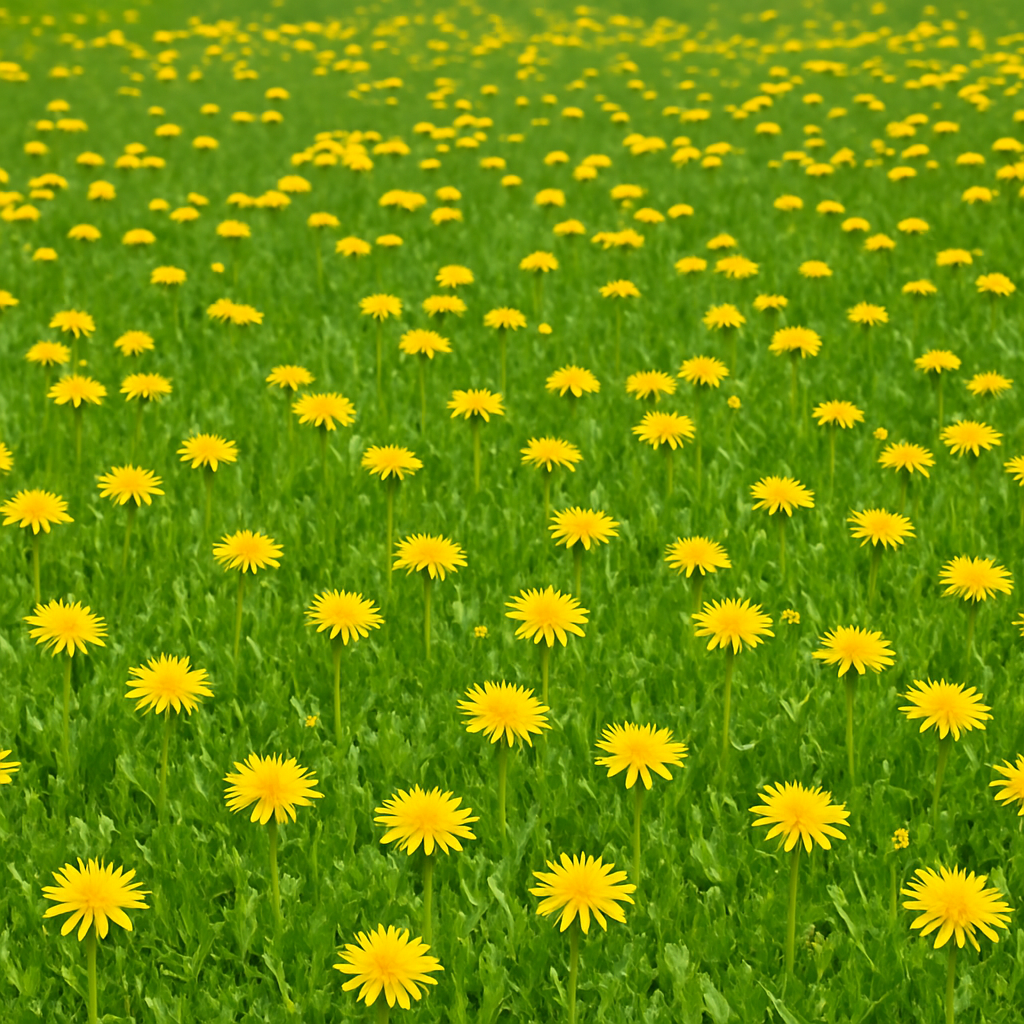
If you want to grow dandelions (Taraxacum officinale) in your lawn, here’s a step-by-step guide that maximizes your chances of establishing a healthy, flower-filled carpet of cheerful yellow blooms:
🌼 How to Grow Dandelions in Your Lawn
Step 1: Stop Using Lawn Herbicides
- Discontinue any herbicides including:
- Broadleaf weed killers (e.g., 2,4-D, dicamba, MCPP).
- Pre-emergent herbicides like crabgrass preventer.
- These chemicals are designed to kill or block dandelions and will prevent success.
Step 2: Choose an Area with Sunlight
- Dandelions prefer full sun but will tolerate partial shade.
- They grow best in disturbed, well-drained soils, including compacted lawns.
Step 3: Prepare the Soil (Optional but Helpful)
- Use a rake or aerator to disturb the top layer of soil, creating some open spots.
- You don’t need to till deeply—just scratch the surface to expose bare soil.
- Dandelions thrive in low-nutrient soils, so don’t fertilize heavily.
Step 4: Get Dandelion Seeds
- Collect seeds from existing wild dandelions by harvesting fluffy seed heads and storing them in a dry paper bag.
- OR buy dandelion seeds online or from specialty seed companies (yes, they’re available!).
- Look for Taraxacum officinale, which is the common dandelion.
- Some heirloom or medicinal seed catalogs carry them.
Step 5: Sow the Seeds
- Scatter seeds in early spring or late summer to early fall.
- Best germination occurs when soil temps are around 50–75°F (10–24°C).
- Broadcast the seeds by hand over thin or bare lawn areas.
- Lightly press them into the soil with your hand, the back of a rake, or by walking over them.
- Do not bury them—dandelion seeds need light to germinate.
Step 6: Water Lightly Until Established
- Keep the area slightly moist until seeds germinate (typically 7–14 days).
- After germination, dandelions are drought-tolerant and require little maintenance.
Step 7: Mow Less Frequently (or Selectively)
- Let dandelions grow tall enough to bloom and go to seed.
- Avoid mowing every week; let flowers mature.
- Or, mow around established dandelion patches if you want a balance of lawn and flowers.
Step 8: Allow Re-Seeding
- Once dandelions go to seed (the puffball stage), let them disperse naturally.
- Wind will help spread seeds across your lawn for next season.
- You can also manually collect and redistribute seed heads.
Optional: Encourage Long-Term Spread
- Core aerate your lawn in the fall or spring—this creates pockets where dandelion seeds can settle.
- Avoid overseeding your lawn with dense turfgrass varieties (like Kentucky bluegrass), which can outcompete dandelions.
- Use low-input turf mixes or let your lawn thin out naturally over time.
🐝 Bonus: Support Pollinators
Dandelions provide early spring nectar for bees and beneficial insects. Leaving them alone in March–May can help native pollinator populations.